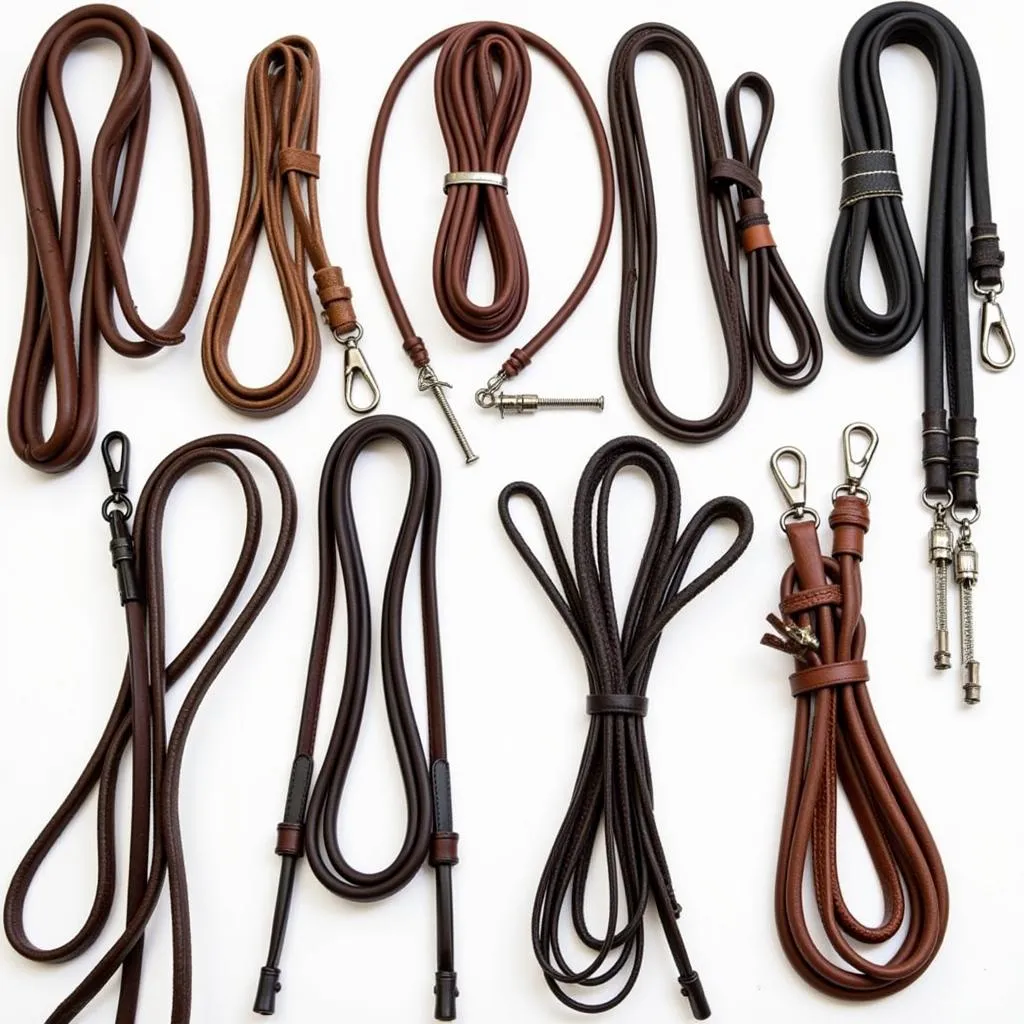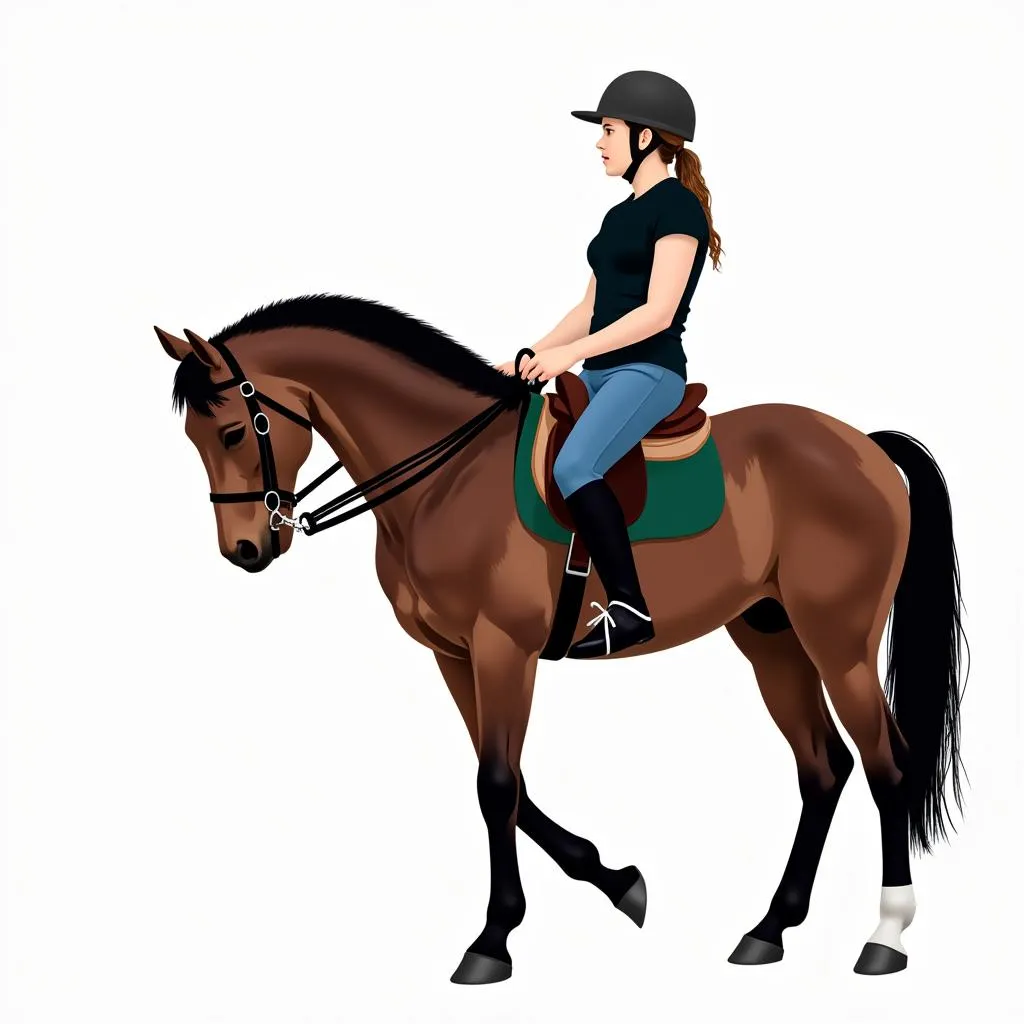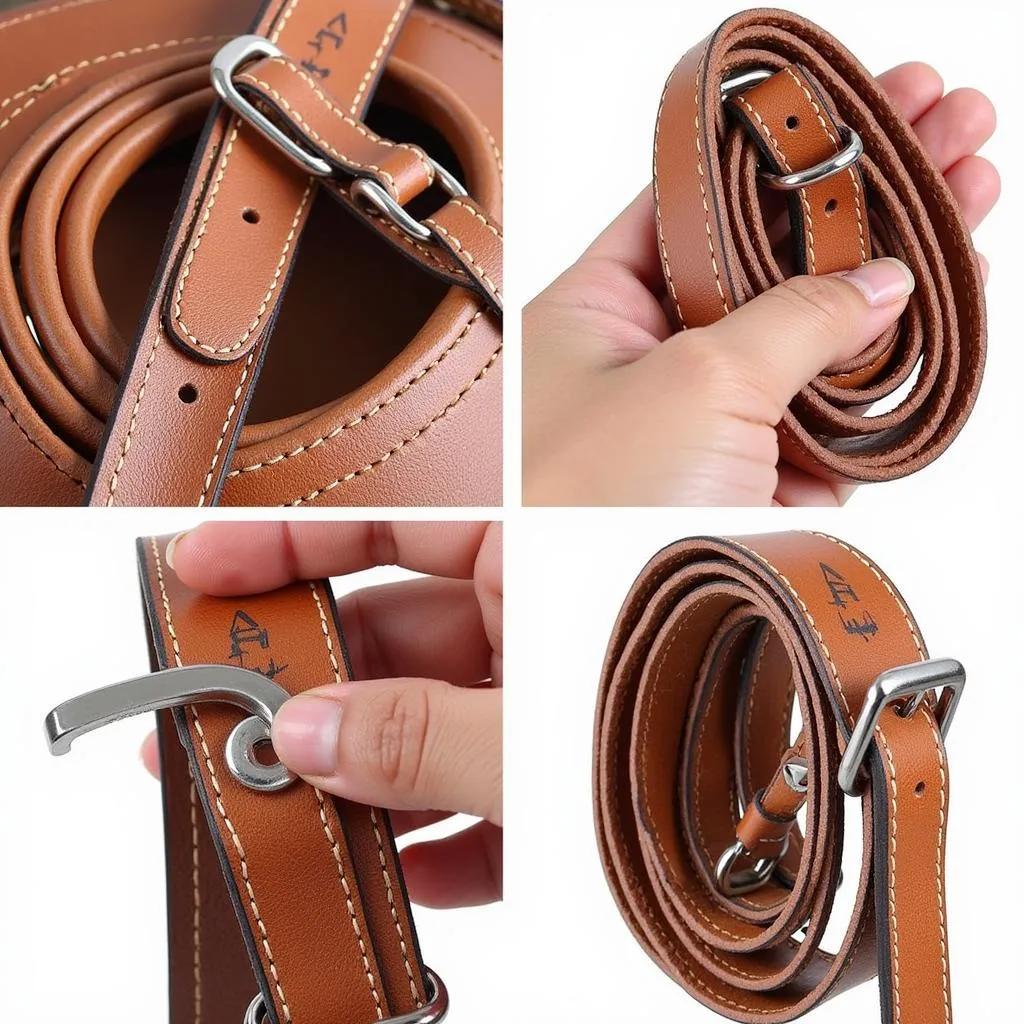Horse reins are an essential piece of equipment for any rider, whether you’re a seasoned professional or just starting out. They serve as a crucial communication tool between you and your horse, allowing you to guide, control, and direct your horse’s movement. This guide will delve into the different types of reins, their uses, and how to choose the best ones for your needs.
What are Horse Reins?
Horse reins are two long straps attached to the bit in your horse’s mouth. These straps are held by the rider and used to direct the horse’s movements. Reins are essential for steering, stopping, and controlling your horse’s speed.
Types of Horse Reins
There are numerous types of reins available, each with its unique features and advantages. Here’s a breakdown of the most common types:
1. Reins for Western Riding:
- Romal Reins: Typically made from leather with a long, single rein that loops around the rider’s hand. These are commonly used in Western disciplines like reining and cutting.
- Split Reins: These have two reins that separate near the bit, allowing the rider more control over the horse’s head and neck. They are favored in disciplines like trail riding and working cow horse.
- Buckle Reins: These reins feature buckles that allow riders to adjust their length. They are known for their durability and versatility, making them popular for various Western activities.
2. Reins for English Riding:
- Snaffle Reins: These are the most common type of rein used in English riding, especially for beginners. They are made of leather or nylon and are typically 4-5 feet long.
- Double Reins: These are used with double bridles and allow riders to control both the snaffle bit and the curb bit, offering more precise control over the horse’s head and neck.
- Martingale Reins: Designed to prevent the horse from raising its head too high, martingale reins are often used in jumping and dressage. They attach to the bit and to a strap that goes around the horse’s chest.
- Running Reins: Long reins used in some English disciplines, such as hunting, to give the rider extra length and control.
Choosing the Right Horse Reins
Selecting the right reins for you and your horse is crucial. Here are some factors to consider:
- Discipline: The type of riding you do will influence the type of rein you choose.
- Bit: Ensure your reins are compatible with the bit you’re using.
- Horse’s Mouth: Consider your horse’s sensitivity and mouth conformation. Some horses might need thicker, softer reins for comfort.
- Length: Adjust the length of your reins to ensure a comfortable and secure grip.
Maintaining Your Reins
To prolong the life of your reins and maintain their quality, follow these care tips:
- Clean them regularly: Use a damp cloth to wipe away dirt and sweat.
- Condition them: Apply leather conditioner to keep them soft and supple.
- Store them properly: Hang them up to prevent wrinkles and creases.
“Always choose high-quality reins made from durable materials like leather or nylon. Your reins are an extension of your hands and play a vital role in your connection with your horse. Investing in quality reins will ensure your safety and help you build a strong partnership with your equine friend.” – Johnathan Smith, renowned equine trainer
Frequently Asked Questions about Horse Reins:
Q: What are the differences between Western and English reins?
A: Western reins are typically thicker and longer than English reins. They are often designed for one-handed riding and have a more distinct feel. English reins, on the other hand, are designed for two-handed riding and are generally thinner and more flexible.
Q: How do I know if my reins are the right length?
A: The ideal length of your reins will depend on your riding style and horse’s size. A good rule of thumb is that you should be able to hold the reins comfortably with your hand at a natural angle without having to stretch or strain.
Q: How do I adjust the length of my reins?
A: If your reins are too long, you can use a buckle to shorten them. You can also adjust the length of your reins by adjusting the bit in your horse’s mouth.
Q: How often should I clean my horse reins?
A: You should clean your horse reins after every ride. This will help remove sweat, dirt, and debris that can damage the leather or nylon.
Q: What is the best way to store my horse reins?
A: The best way to store your horse reins is to hang them up. This will help prevent wrinkles and creases.
Q: Where can I find quality horse reins for sale?
A: You can find quality horse reins at many equestrian stores, online retailers, or even local tack shops. When shopping for reins, look for durable materials, a comfortable feel, and a reputable brand.
Conclusion
Choosing the right horse reins is crucial for any equestrian. They are a vital part of communication between you and your horse, allowing you to guide, control, and direct their movements. By understanding the different types of reins, their uses, and how to choose the best ones for your needs, you can ensure a safe and enjoyable riding experience. Remember to care for your reins properly to maintain their quality and extend their lifespan.
 A close-up shot of various types of horse reins
A close-up shot of various types of horse reins
 A rider skillfully using reins to control their horse
A rider skillfully using reins to control their horse
 A detailed view of a leather rein with intricate stitching
A detailed view of a leather rein with intricate stitching
If you have any more questions about horse reins, please feel free to contact us!
We’d be happy to assist you in finding the perfect reins for your needs.